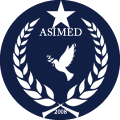Armenians have claimed that many regions in Turkey, Azerbaijan, Georgia and Iran are their own lands, and they have tried to convince the world public opinion of their own lies by making great efforts in this regard, and they have been successful in this to a certain extent.
The situation in Karabakh, which is the biggest problem of our time within the scope of the Armenian issue, is also in this center. Armenians defend that this region, which has been Turkish territory for centuries, is their own land and they misinform the world public opinion. However, the settlement of Armenians in Karabakh was the result of the developments after the Turkish-Russian and Russian-Iranian wars of 1828-1829, and Armenian groups were settled in Karabakh by the Tsarist Russia.
Although there are many different communities in today’s Caucasus region, the ethnic homogeneity of Armenia today has been achieved at the expense of the massacres and atrocities that continued for 160 years against the Turkish and Muslim populations in the region. The territory of today’s Armenia was once a region mostly inhabited by Turks and ruled by Turkish khanates.
After the Revan and Nakhchivan Khanates were brought under Russian domination with the Turkmenchay Agreement signed in February 1928, the “Armenian Province” was created on the lands of these two khanates on March 21, 1828. In the newly created Armenian Province, with the instruction of Russian Commander Paskevich, İ. The registration works were carried out between April 1829 and May 1832 by a committee under the presidency of Şopen. The work of the delegation was published in Petersburg in 1852 as a book titled “The Condition of the Armenian Province at the Time of its Accession to the Russian Empire”. According to this study, 142 thousand people lived in the Armenian Province before the occupation, of which 117 thousand were Turks (82.4 percent) and 25 thousand Armenians (17.6 percent).
While the Armenian population in the region did not even reach 20 percent when the Armenian province was established, it would reach 58 percent in 1916. The same thing happened in Revan, the center of the region. While 59 percent of Revan was Turkish in 1908, this figure dropped to 45 percent in 1917. By 1932 it would decrease to 6 percent. During the massacre and exile policy applied against the Turks, between 520-550 thousand Turks were either killed or forced to migrate.
During the Soviet Union period, Turkish place names were changed in Armenia and the traces of Turks were tried to be completely erased.
Today, the main issue that needs to be discussed, brought to the agenda and attracting the attention of the world public opinion is the Turkish lands within the borders of Armenia. Lastly, it is the defense of the rights of hundreds of thousands of Turks who were expelled from Armenia before and after the earthquake in 1988. As an association, we bring this issue to the agenda, inform the world public opinion, and demand the rights of the Turks exiled from the region. There are many Turkish settlements within the borders of today’s Armenia, which the Turkish population had to evacuate as a result of various atrocities committed by the Armenians. Not only Turkish sources but also Russian and Armenian official sources confirm this. For example, according to the census of the Russians in 1908, it was recorded that there were approximately 800 Turkish villages within the Yerevan Province and 357,035 Turks living in these villages.
The official Armenian publication titled “Armiyanskaya SSSR Administrativno-Territorialnoye Deleniye” (Administration and Territorial Divisions in SSSR Armenia) published in Revan (Yerevan) in 1971 is the most important proof of the assimilation of Armenians.
This work shows how the settlement centers of Armenians in today’s Armenia, which are Turkish and named Turkish, were changed by the decree in which year. According to this official confession, the names of 336 Turkish settlements were changed. In this official publication of Armenia, which was published in Armenian and Russian in Yerevan, the settlements with the names of Turks, whose names were changed until May 1, 1971, were recorded one by one. We have all the details such as the name of which settlement was changed by the decree, when and what date, and what their new names were.
We started to send this work we prepared to the governments, non-governmental organizations and media organizations of the US, Russia, UK and EU member countries, especially the Armenian government. As an association, we would like to state once again that we will continue to stand by brotherly Azerbaijan in this matter, as in many other issues. We will continue to work for the protection of the rights and laws of every Turk, wherever they are in the world.






Comment here